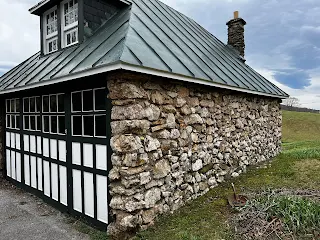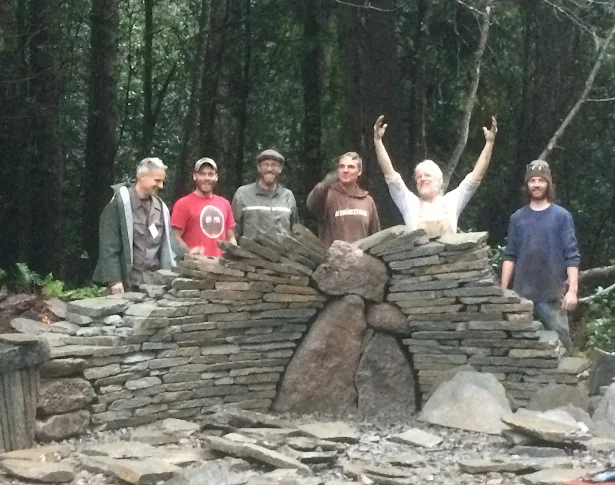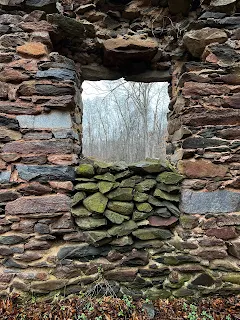In the vicinity of the Village of the Bories at Gordes in Vaucluse, France we looked amidst the bushes for other unique structures. We found one that had not been restored to someone else’s concept of what it should or could have looked like .
Everyone has an interpretation of the original. But we wanted to see a site (inside and out) before it was all fixed up. We wanted to learn its story. Its good to be able to study deterioration that has not yet been repaired, to see for ourselves things like, how and why a section of wall failed, or how a strange shaped opening fell apart or why a thin lintel in the side opening hadn't cracked.
We learn more from seeing the mistakes of the original builder than the repairs of those who follow .
And are they all mistakes?, Really? OR, Were they the best answer for the circumstance, for the purpose perceived at the time. What was the time period the structure was determined to likely be of use.
It's difficult to surmise what happened if the evidence has been removed.
Questions like -
“Were there any long through stones or did they all break? Or did someone steal them?”
“Why is this door opening so short ?" (unlike all the ones in the Village of Bories , that had been rebuilt a foot taller)
We enjoy sandcastles, not just seing them in their pristine state, but to delight in watching the sped-up processes of 'decay over time' – to watch how an arch collapses, or where incoming water erodes away the wall, first. We gradually learn to appreciate the inevitability of impermanence.
To every thing there is a season, and then, that season is over. We want to watch the seasons change. We want to take pleasure in that gradual eventuality.
It seems foolishness not to accept or take any pleasure in or at least be curious in that 'eventuality'. After all it is an essential component of existence, – the propensity of all things to move towards their expiry date.
We shall continue to build things to last, yes, but never suppose we can, or indeed think we can defy, or ever win over the forces of entropy.
A modern ( over engineered ?) building often makes, no concessions to the reality of beautiful decay.
Vernacular rustic humble aged structures seem better, more beautiful, for accepting their lot in the process of time.
Whether it is a humble dry stone hut, or a proud Roman aqueduct, the reality of its journey towards obsolescence need not be disguised.
We all start as adolescents and THEN ... we become obsolescent. The 'then' can be a long beautiful journey.





































